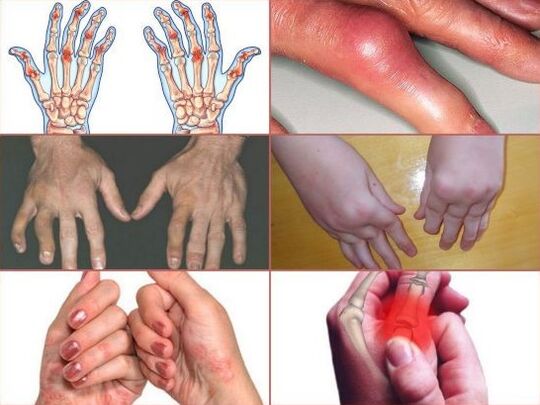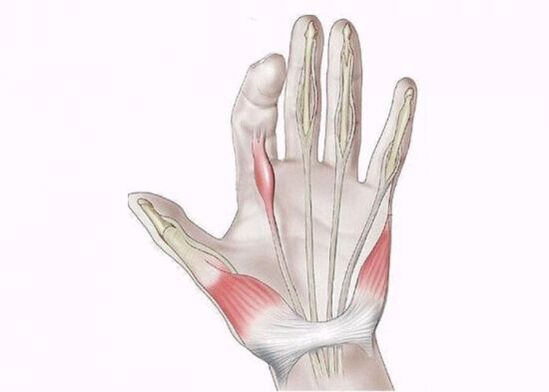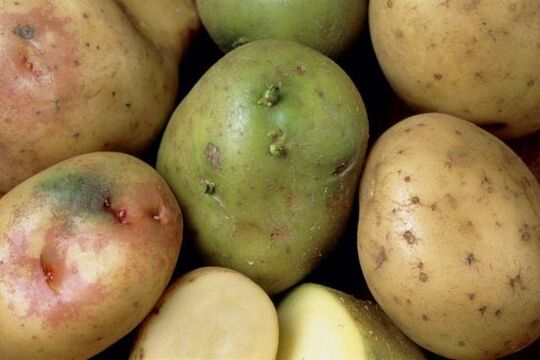
The hand is the most complex region of the upper limb in its structure. It consists of many bones, which are tightly packed together. The bones are connected through 30 different joints - interphalangeal, metacarpophalangeal, carpometacarpal and radiocarpal.
Statistically, the hands are injured more often than any other part of the body. According to various sources, the number of injuries accounts for 30 to 50% of the total number of musculoskeletal system injuries and does not tend to decrease.
Therefore, of all the causes of finger pain on the hand, the main cause is trauma. Second in prevalence are connective tissue diseases - rheumatoid arthritis, systemic scleroderma and lupus erythematosus, psoriasis. Less often, pain in the joints of the fingers is caused by violations of metabolic processes in gout, osteoarthritis.
Symptom
Signs of a non-traumatic injury that may indicate the presence of joint disease include the following:
- pain syndrome, frequent or undulating;
- pain when pressing and bending the fingers;
- swelling and redness of the skin over the joints;
- stiffness, stiffness when moving;
- impaired fine motor skills;
- creaking, crunching and crackling sounds when fingers are folded;
- the formation of nodules under the skin, which are painless to the touch;
- thickening of the skin in the folds;
- change the configuration of the joint;
- increase body temperature.
Rheumatoid arthritis
Arthritis of rheumatic origin usually affects the fingers, as well as in both the right and left hand. This systemic disease is characterized by a malfunction in the immune system, in which T lymphocytes begin to attack their own cells. The cells of the synovial membrane lining the joint capsule from the inside actively produce rheumatoid factor: pathological antibodies are protective protein molecules.
Next, the rheumatoid factor enters the bloodstream and binds to normal antibodies. As a result, immune complexes are formed that are deposited on blood vessels and tissues. They are absorbed by cells of the immune system - neutrophils and phagocytes, releasing substances that are harmful to surrounding structures.
It is known that this is how inflammation develops in rheumatoid arthritis. However, scientists have not been able to determine the cause of this process. According to the latest research in the field, the culprits of connective tissue damage are cytokines - signals of immune cells. Japanese experts concluded that research on this cell type will help find an effective cure.
With rheumatoid arthritis, any finger can be painful - the index, middle, ring, or little finger, but the damage will always be bilateral. If one or more fingers on the left hand become sick, the same fingers on the right hand begin to hurt almost immediately.
The joint areas are swollen and red due to the accumulation of a lot of fluid, so they cannot bend, especially in the morning. Morning stiffness can last up to an hour. Over time, the progression of arthritis leads to the replacement of smooth cartilage tissue with fibrous structures, disrupting the free movement of the bones in the joint.
Over time, the joints are deformed, due to the change in the position of the elements in the joint, the pain becomes more and more intense. With a prolonged course of the disease, small painless nodules appear near the joints on the back of the hands - rheumatic nodules.
Psoriatic arthritis
Symptoms of this disease can resemble rheumatoid arthritis and occur against the background of a dermatological pathology - psoriasis. In the vast majority of cases, the rash appears initially on the skin, after a while the joints of the fingers become painful.
Simultaneous manifestations of skin and joint damage may also occur; In 20 out of a hundred patients, the joints begin to hurt earlier. Why psoriasis occurs is still unknown. Presumably, it can be caused by genetic predisposition, malfunctioning immune system, and infections. The mean age of the patients was 40 years old.

Psoriatic arthritis may begin, like rheumatoid arthritis, with general weakness and discomfort, or it may manifest itself as sudden, sharp pain. Not only the fingers can be affected, but also the small joints of the feet, knees, and shoulders. Involvement in the pathological process can be unilateral and symmetric.
The pain syndrome is most pronounced at night and at rest. In the morning, there is stiffness, during the day and when moving, the pain decreases. Most often, there is a lesion on one side - the left or right side, and as a rule it does not hurt one, but 2-4 joints (oligoarthritis).
After a long period of rest, the fingers swell and become like sausages, the tendons of the flexor muscles become inflamed, the skin over the joints becomes bluish-purple. The following symptoms indicate the presence of psoriasis and psoriatic arthritis:
- red or pink scaly spots on the head, elbows, knees and thighs - they can be single or cover a large area of skin;
- characteristic pitting on the skin of the hands, similar to smallpox, pigmentation on the fingers or toes;
- congestive, edematous, and possibly pruritic psoriatic plaques;
- soreness in the joints is permanent and does not go away during the day;
- The mobility and function of the hand is significantly reduced.
Arthritis psoriasis is one of the most severe forms. Usually, joint deformity is not observed, but if this occurs, fusion of the articular surfaces of the bones (ankylosing spondylitis) is not excluded.
The danger of this disease is that the large joints and spine gradually become involved in the pathological process. Osteoporosis develops, joints are destroyed, so psoriatic arthritis often leads to disability.
Osteoarthritis
With joint disease, the process of forming cartilage tissue that covers the joint surface of bones is disrupted. This is facilitated by both external and internal factors - trauma, high physical activity, genetic predisposition and metabolic disorders.
Depending on the etiology, arthropathy can be primary and secondary, developing against the background of an endocrine or metabolic disease. Usually, arthropathy affects the large joints of the lower extremities — the knees, hips, and ankles — because they bear the primary load when walking and standing. The upper extremities are affected much less often.
When the fingers are sore from prolonged exertion and, after rest, the pain disappears, which does not exclude the development of arthropathy.
Over time, other symptoms appear:
- pain increases when gripping the hand or stretching the fingers;
- an increase in the size of the diseased joint;
- morning stiffness, requiring the "growing" of the fingers for 10-15 minutes or so;
- characteristic crackling sound when bending fingers.
Osteoarthritis develops slowly and may not cause much concern for several years or even decades. In some cases, however, there is a rapid increase in symptoms and a marked worsening of the condition. If at first the pain occurs only with exertion, then it does not go away even with rest.
Due to the marginal growth of the bones that form the joints, characteristic pineal shapes appear. Closer to the palm, at the joints near the body, Bouchard's nodules are formed. Next to the distal interphalangeal joints, located near the fingernails, are the Heberden's nodules.
Tendonitis
Finger tendonitis affects the ligamentous apparatus of the hand and is manifested by blocking one of the fingers in a flexed or extended position. The pathological process is caused by an overload or overuse of the ligament, so it occurs in manual workers - masons, welders, seamstresses and cooks. In children, anterior cruciate ligament inflammation is extremely rare and affects only the thumb.

The main symptom of the disease is the finger "jumping" when stretched, accompanied by a clicking sound. In the future, the "snap" disappears, and the finger becomes immobile, becoming spastic or flexed.
In the early stages, there is pain when pressing on the palm at the base of the finger and difficulty in flexion/extension, especially pronounced in the morning. With a protracted episode of tendinitis, you can only move your finger with the help of your other hand, and after the "snap" the pain spreads not only to the palm, but also to the forearm. .
Which doctor to contact?
For pain in the fingers, you can first contact a therapist, who, if necessary, will refer you to a narrow specialist - traumatologist, rheumatologist, doctorhematologist, neurologist or surgeon. Clinical, radiological, and laboratory research methods are used to make the diagnosis.
To find out the cause of the pain, perform a cesarean section (see history) and do a physical exam, followed by X-rays or CT scans, and blood and urine tests.
Treatment
How to treat and what to do next will depend on the results of the examination. The number 1 task is to reduce pain and inflammation: for this, drugs from the NSAID group are prescribed - non-steroidal anti-inflammatory drugs. Currently, there are more and more commonly used means of a new generation, NSAIDs with selective action.
Selective NSAIDs have selective action and are less toxic to the body, can be used for a long time. If the pain syndrome is moderate or mild, topical drugs are used - anti-inflammatory ointments and gels.
Treatment of rheumatoid arthritis includes basic and biologic products, steroid hormones. These drugs suppress the immune system, thereby reducing the intensity of the inflammatory process.
The same immunosuppressive drugs are also prescribed if the joints are painful from psoriatic arthritis. Methods such as electrophoresis, hemodialysis, and photochemotherapy are used to reduce disease activity, prolong remission, and shorten drug therapy.
Treatment of osteoarthritis depends on the stage of the disease. In stages 1-2, it is possible to significantly slow down the destruction of cartilage by taking chondroprotectors. Physiotherapy is effective, helping to enhance the effects of drugs and stimulate the healing process.
For the treatment of dry joints may be prescribed:
- acupuncture therapy;
- electrophoresis;
- lasers;
- supersonic;
- cryotherapy - contact the joints with liquid nitrogen;
- therapeutic bath - bath with mineral water;
- hirudotherapy - during treatment with leeches, substances that promote cartilage regeneration (hirudin, vitamins and hormones) enter the joints.
Therapeutic strategies for cruciate tendonitis are determined taking into account the stage, the presence of predisposing factors, and the age of the patient. If the ligament damage is minor, the load on the hand should be reduced, if necessary, the hand is immobilized with a splint or orthopedic brace. For pain, anti-inflammatory drugs and electrophoresis with hyaluronidase are prescribed.
Second-stage treatment begins with conservative methods. Failure to do so for several months is an indication for surgical removal of the damaged ligament. In patients with the third stage, conservative treatment is performed extremely rarely, in most cases, surgery is performed as planned.
Reference: due to the high risk of recurrence, it is very important to change your occupation if it involves loads on the hands.
Folk remedies
Means prepared according to folk recipes cannot be the main treatment because they are not effective enough. However, as a complementary therapy, such drugs will help reduce pain and enhance the effects of the drug.

Mix a little bay leaf with juniper leaves, add a little butter and massage your hands with the resulting ointment.
At night, you can make a tablet using crushed chalk, kefir, fermented baked milk, or boiled oatmeal.
For the compressed potatoes, green potatoes are used, which must be chopped directly from the skin in a meat grinder or on a masher. Then dip the potatoes in hot water and warm up to 39-40°. Then, put it in a linen bag and apply it to the painful joints for half an hour. The procedure can be performed several times a day.
Paraffin applications soothe pain very well, if you dip your hands in melted paraffin for 10 minutes, then keep them in any herbal decoction for 15-20 minutes. You can not be afraid of burns, because paraffin melts at a temperature not exceeding 65°. To achieve the effect, 2-3 applications per week is enough.
Compression with Bischofite helps accelerate tissue healing. Due to its composition, this natural mineral reduces pain and inflammation, restores joint mobility. Regular use of Bishofit maintains the firmness of muscles and connective tissues.
Applying Bischofite is recommended to do the following: warm the joints with a heating pad or hold them in a warm bath, then rub Bischofite, previously diluted with water 1: 1, onto the skin of the hands. Continue rubbing for a few minutes, then use a cloth or gauze soaked in this solution to apply to the painful area. From above, the compressor is covered with polyethylene and insulated. Compression with Bischofite is carried out at night, in the morning hands are thoroughly washed with warm water. The procedure is carried out every other day for three weeks.
Reference: a Bischofite compression can be placed simultaneously on no more than three joints.
The most important thing
To prevent or reduce the intensity of the pain that has occurred, you need to keep the brush warm and not let the brush hypothermia. Work that requires the same type of movement is best done intermittently, and when using vibrating tools, use gloves and support the brush with the other hand. When lifting and carrying heavy loads, the weight of the load should be evenly distributed to both limbs. You can also maintain healthy joints with the help of a proper diet, which includes foods containing calcium and omega-3 fatty acids.

















































